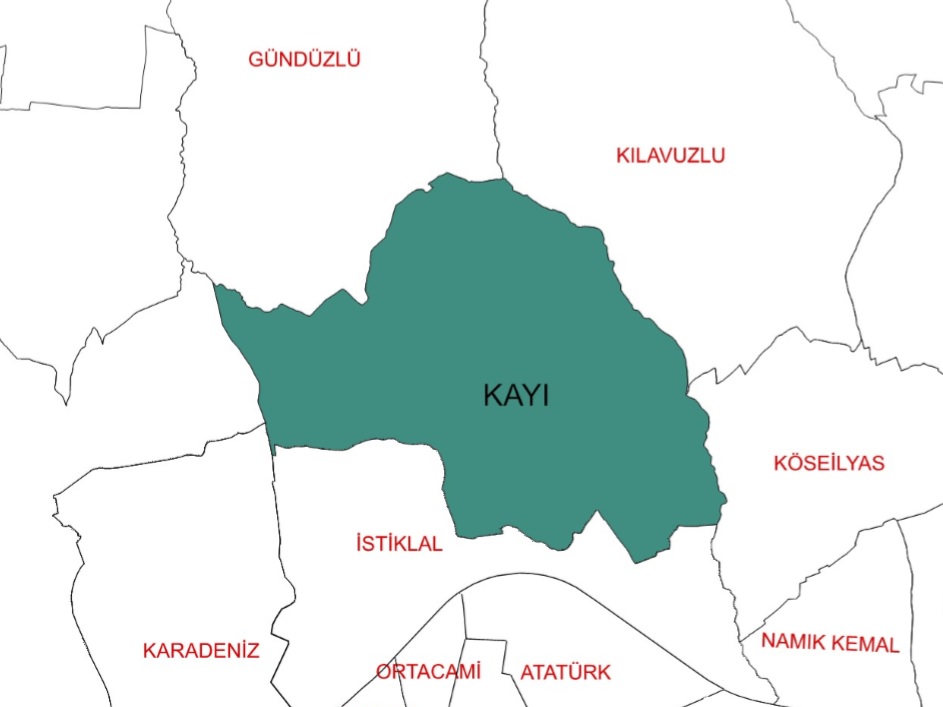

Kayı village was established with the Murat foundation. It was founded between the years 1430 and 1440 by the Hacıbalioğlu dynasty, which was from the Kayı tribe of the Oghuzes around Kastamonu Tosya. In the village cemetery, there are inscribed tombstones belonging to this dynasty since 1530. In 1920, the military headquarters were located above the village and cemetery was hit several times by Greek ships from the sea, and most of the tombstones were destroyed. The first settlement of the village is around nine yalak districts. In the old records, it is concluded that is founded by Murat. However, at the moment, no one of the old natives in the village is descended from the male side. The young men who will continue their generations in the last Çanakkale War (Hacıbalioğlu Mehmetoğlu Osman martyrdom, 18 April 1915, were martyred at the age of 15. Today, the descendants of the old families, the men who settled in the village in the 1800s, who did not participate in the Çanakkale War, continue.
One of those families sent 2 of their 3 sons to the Dardanelles War, one son was martyred (Süleyman, son of Mistik is 16 years old), and the other son (Huseyin, son of Mistik) joined the Dardanelles War without even visiting his home, and went to the Yemeni front and was captured by the British after 7 years of captivity. He continued his lineage by returning to his village. After Kocaağa Mehmet, who remained in the village from the founder Hacıbalioğlu dynasty, martyred his son in the Battle of Çanakkale, he takes his daughter, whom he married in Kırkepenekli (his wife is martyred in Çanakkale), with his daughter and son, and the Hacıbalioğlu household continues as Gülçiftçi and Özballar.
The first migrations to the village from the Balkans happened in 1925, 5 families of Albanian origin came from the Hamzalı village of the current Macedonian city of Skopje. These families settled there after purchasing the place that belonged to Haşim Ağa. (Kayılı Haşim Ağa buys a tractor with a relative from the village in 1926, but the tractor cannot be shared, and when the fight broke out, one of Haşim Ağa's daughters was killed. Haşim Ağa later sold his property and went to Haşim Ağa from Yarabsan, to whom he had given his other daughter.)
Then, from 1929 onwards, villagers called mountain people from the Turkish city of Kırcaali and its villages (Salifler, Hacımehmet, Adalı, Otmanköy, Köseler, ...) in today's Bulgaria came and settled in the treasury lands above the village. Later, 10 acres of land were given by the state. In 1951, as the right of resettlement, the lands were completed to 40 acres.
Tekirdağ central district is 5 km from Süleymanpaşa.
The economy of a village depends on agriculture and husbandry.
There is elementary school at the village however it is not in use, mobile education is taken advantage of. The village has drinking water and sewerage network. There is no PTT branch or PTT agency. There are health centers, but there is no medical home. The road that provides access to the village is asphalt and there is electricity and fixed telephone in the village.
The population in 2019 is 309 people.